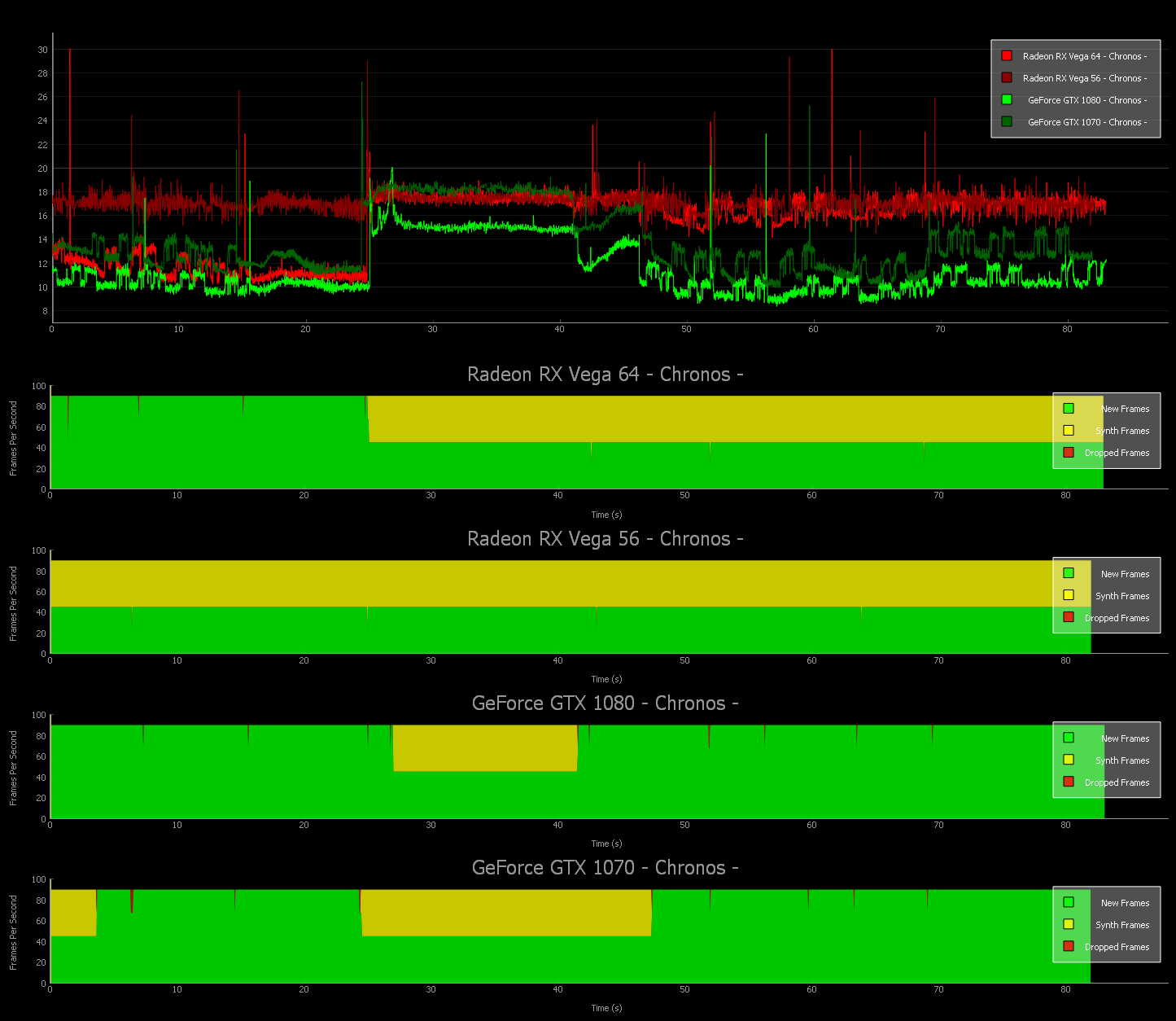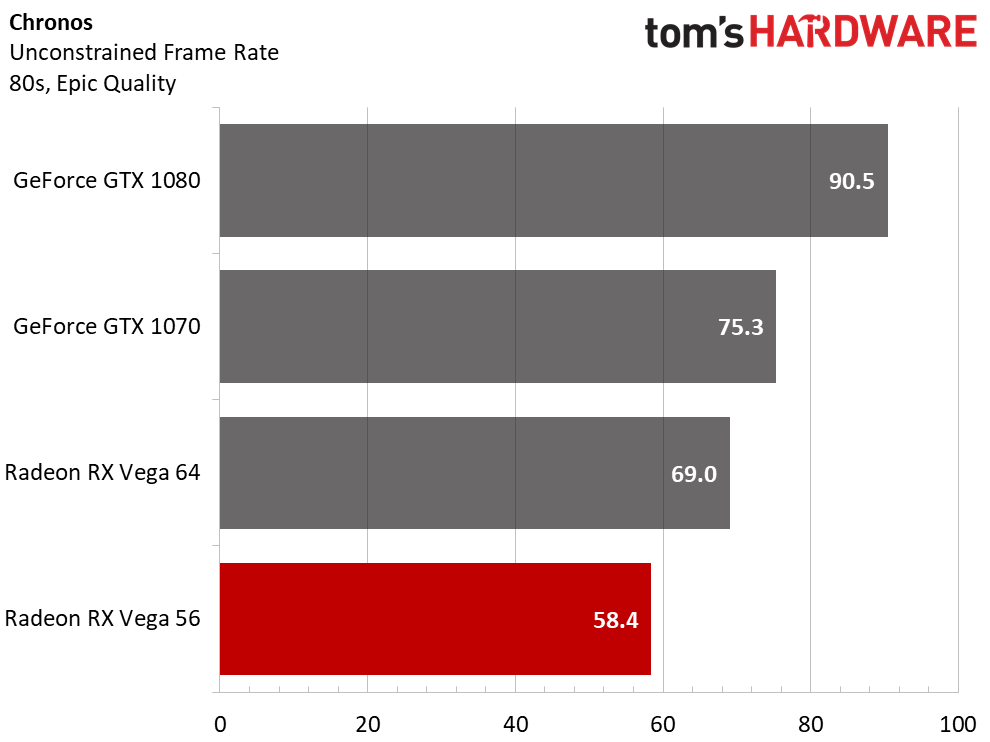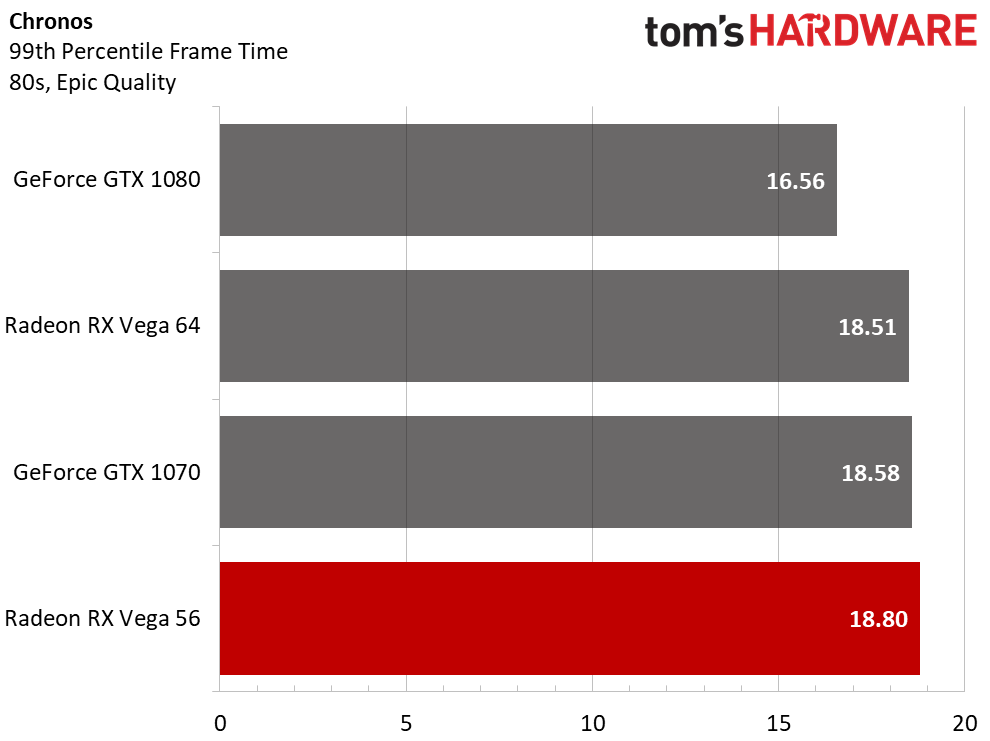AMD Radeon RX Vega 56 8GB Review
Why you can trust Tom's Hardware
VR: Chronos (DirectX 11)
Chronos at its highest quality settings is taxing, even for today’s top-end graphics hardware. But it’s also a UE4-based game, and Nvidia historically fares better in those.
Sure enough, we see the GeForce GTX 1080 spend a brief bit of our 80-second run in ASW mode, while the rest of its frames are new. GeForce GTX 1070 is a little more dependent on synthesized frames for a smooth experience, but it starts generating new frames again once the runtime sees headroom open up.
Radeon RX Vega 64 starts the benchmark pumping out new frames, but never recovers once we hit the taxing passage that forces Nvidia’s cards into ASW mode initially. Vega 56 simply cannot help but to rely on a 1:1 ratio of real to synthesized frames.
An unconstrained frame rate >45 FPS shows that Vega 56 at least has some performance reserves to maintain its ratio of one real to one synthesized frame. We’ve seen slower cards, like Radeon RX 470, that often require two synthesized frames for every real one. That’s no good. But it also means Radeon RX Vega 56 is significantly slower than GeForce GTX 1070 in Chronos.
The 99th percentile frame times show why it’s necessary for all of these cards to switch over into ASW mode for at least part of our Chronos benchmark.
MORE: Best Graphics Cards
MORE: Desktop GPU Performance Hierarchy Table
Get Tom's Hardware's best news and in-depth reviews, straight to your inbox.
MORE: All Graphics Content
Current page: VR: Chronos (DirectX 11)
Prev Page VR: Arizona Sunshine (DirectX 11) Next Page VR: DiRT Rally (DirectX 11)


